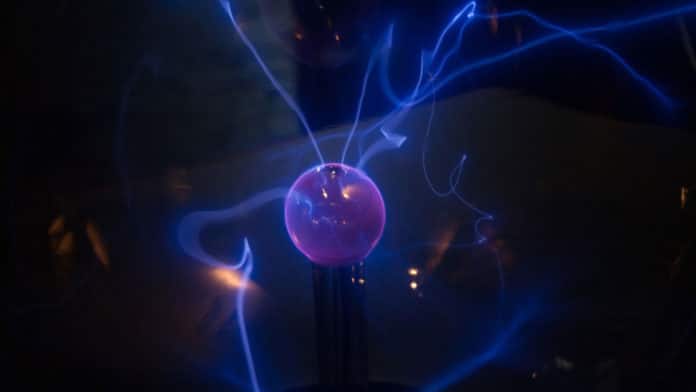Physicists at the Center for Computational Quantum Physics at the Flatiron Institute in New York City have succeeded in creating a remarkable, never-before-seen phase of matter. Although there is still only one single flow of time, the phase benefits from having two-time dimensions. This discovery offers a way of storing quantum information less prone to errors.
Study lead author Philipp Dumitrescu said, “As a result, the information can exist without getting garbled for much longer, an important milestone for making quantum computing viable.”
It is crucial for quantum sensing and computation to achieve precise control over quantum many-body entanglement. According to extensive theoretical research, these characteristics can enable dynamical phases and critical phenomena that demonstrate topologically robust strategies to establish, protect, and manage quantum entanglement that self-correct against a wide range of faults. But up to now, only conventional (non-entangled) symmetry-breaking orders have been realized experimentally.
In this work, physicists demonstrated an emergent dynamical symmetry-protected topological phase in a quasiperiodically driven array of hyperfine qubits in Quantinuum’s System Model H1 trapped-ion quantum processor. This phase shows edge qubits that are dynamically protected from control errors, cross-talk, and stray fields.
Lead author Philipp Dumitrescu said, “The approach’s use of an “extra” time dimension “is a completely different way of thinking about phases of matter. I’ve been working on these theory ideas for over five years, and seeing them come actually to be realized in experiments is exciting.”
The hyperfine qubits of the team’s quantum computer are ten atomic ions of an element called ytterbium. These ions are held separately by electric fields produced by an ion trap. They can also be manipulated or measured using laser pulses.
The easiest way to comprehend their methodology is to think about another ordered but a non-repeating object: “quasicrystals.” Similar to the hexagons in a honeycomb, the structure of a typical crystal is regular and repeating. Although a quasicrystal still exhibits order, its patterns are unique. The fact that quasicrystals are crystals from higher dimensions projected, or squashed down into lower dimensions, is even more perplexing. These higher dimensions may even exceed the three dimensions of physical space: A 2D Penrose tiling, for instance, is a projected slice of a 5D lattice.
For the qubits, physicists proposed in 2018 the creation of a quasicrystal in time rather than space. Whereas a periodic laser pulse would alternate (A, B, A, B, A, B, etc.), they created a quasi-periodic laser-pulse regimen based on the Fibonacci sequence. Each sequence part is the sum of the two previous parts (A, AB, ABA, ABAAB, ABAABABA, etc.).
Similar to a quasicrystal, this pattern is arranged without repetition. Additionally, it is a 2D pattern condensed into one dimension, much like a quasicrystal. Theoretically, this dimensional flattening leads to two-time symmetries rather than one: the system receives a bonus symmetry from a fictitious additional time dimension.
Dumitrescu said, “Using Quantinuum’s quantum computer, the experientialists put the theory to the test. They periodically pulsed laser light at the computer’s qubits and used the sequence based on the Fibonacci numbers. The focus was on the qubits at either end of the 10-atom lineup; that’s where the researchers expected to see the new phase of matter experiencing two-time symmetries at once.”
“In the periodic test, the edge qubits stayed quantum for around 1.5 seconds — already an impressive length given that the qubits were interacting strongly with one another. With the quasi-periodic pattern, the qubits stayed quantum for the entire length of the experiment, about 5.5 seconds. That’s because the extra time symmetry provided more protection.”
“With this quasi-periodic sequence, a complicated evolution cancels out all the errors that live on the edge. Because of that, the edge stays quantum-mechanically coherent much longer than you’d expect.”
“Though the findings demonstrate that the new phase of matter can act as long-term quantum information storage, the researchers still need to functionally integrate the phase with the computational side of quantum computing. We have this direct, tantalizing application, but we need to find a way to hook it into the calculations. That’s an open problem we’re working on.”
Journal Reference:
- Dumitrescu, P.T., Bohnet, J.G., Gaebler, J.P. et al. Dynamical topological phase realized in a trapped-ion quantum simulator. Nature 607, 463–467 (2022). DOI: 10.1038/s41586-022-04853-4
